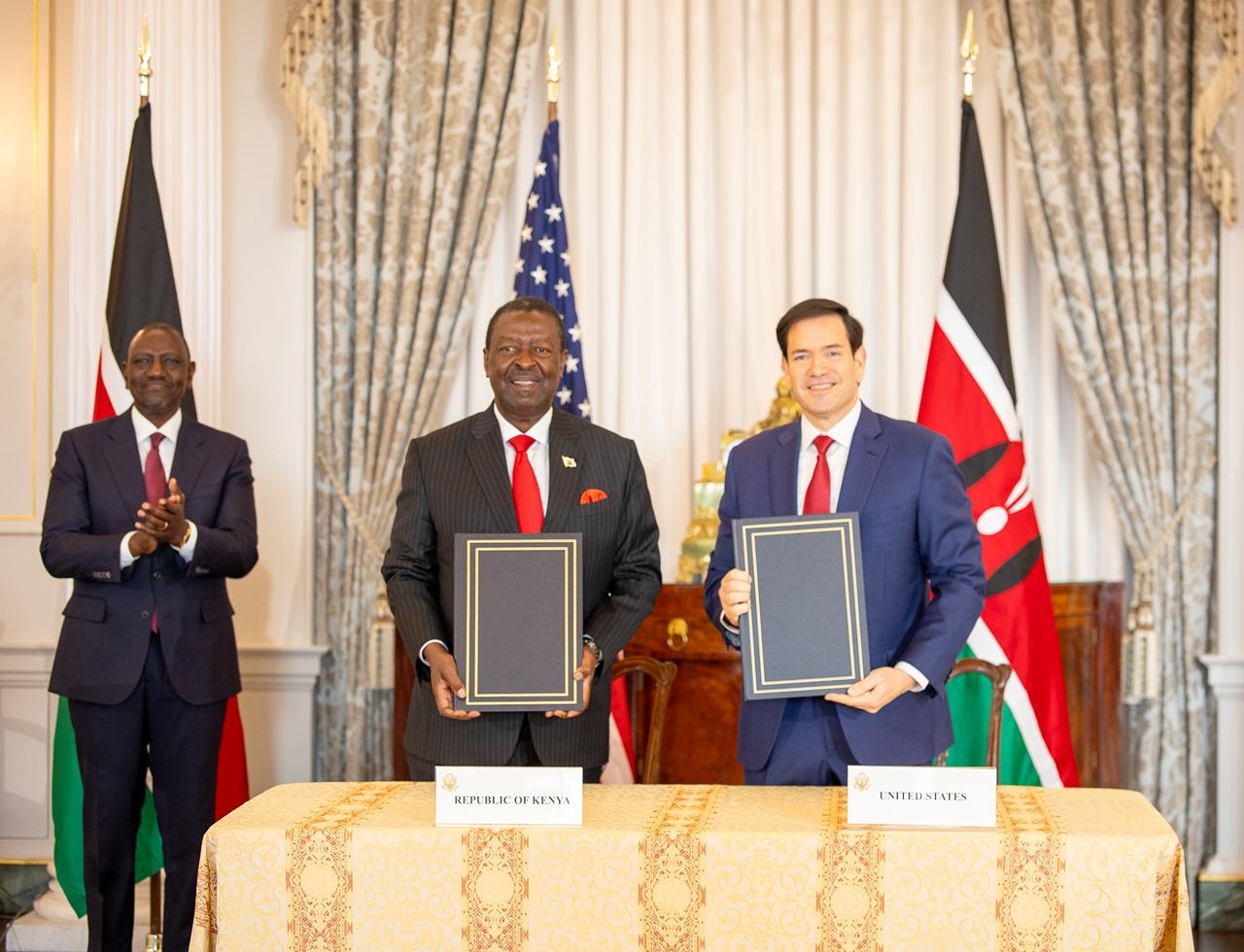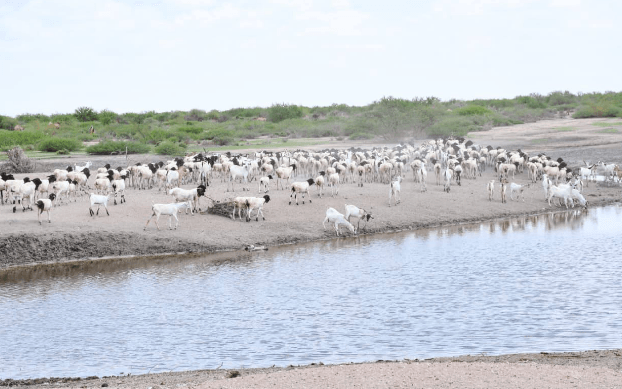
Climate change is a global issue that has had adverse effects worldwide and impacted every sector, people, environment and ecosystem.
Villages and communities have been displaced due to flooding, rising global temperatures and water levels in the sea, loss of biodiversity, and most importantly, food and water security.
Agriculture being one of the main activities many families in rural areas practise around the country, changes in weather patterns and less rainfall have greatly impacted the produce farmers get at the end of every season.
As one of the semi-arid counties in Kenya, Machakos has over time been experiencing the effects of climate change with unpredictable and unreliable rainfall.
The county averages an annual rainfall below 1,000m, which has led to crop failure and a lack of water for domestic use.
Yatta subcounty agricultural officer Japheth Muthiani said rainfall patterns in the county have changed drastically, and he blames this on climate change.
“We used to expect long rains in the months of October, November and December, starting from October 15 onwards, yearly. The time-frame for the same in the months of March to April has also changed,” he said.
He adds that the distribution and amount of rainfall the county receives have also changed.
“The distribution used to be all through the season, but nowadays, we experience a lot of rain within a short period of time, and then it doesn’t rain at all,” Muthiani said. “What the crops need is moisture, not rain. If the moisture is not distributed throughout the season, then we’ll have a problem.”
The impact of poorly distributed rainfall has interfered with the productivity of the county as crops experience stunted growth or wither before they produce.
Farmers have to supplement their farming with irrigation to produce quality yields and have enough harvest.
CREATIVE SOLUTION
In Yatta, a few farmers who had enough capital turned to the use of generator water pumps for irrigation. Some families had to continue depending on rainfed agriculture as they couldn’t afford to buy or rent one.
The downside of using generator water pumps is that they consume a lot of fuel, which is also expensive. They also cause pollution and emit CO2 into the environment, which contributes to global warming.
According to data by the United Nations, limiting the global temperatures to no more than 1.5°C would help the world avoid the worst climate impacts and maintain a livable climate.
Traversing through various farms in Yatta subcounty, farmers have embraced the use of ram water pumps to irrigate their crops.
This little-known innovation has enabled farmers to do irrigation during the dry seasons and have water for domestic use.
A ram pump has a 13kg empty gas cylinder that is inverted, fitted with a valve, an inlet where water comes in and an outlet where the water is pumped out.
The size of the gas cylinder used can be bigger, depending on one’s ability to buy one. The interesting part of this ram pump is that it doesn’t use any fuel, electricity or solar energy to pump water from the river to the reservoir tank or to the farm.
Peter Mugwero, a resident-turned-technician in Yatta, first learnt about the ram pump on the Internet. At the beginning, he couldn’t fully understand the type of connection that was being made at the point where the inlet water pipe came into contact with the gas cylinder, and this bothered him for some time.
“This is because the person who posted the video didn’t clearly demonstrate and give detailed information about that specific part, Mugwero said.
Years later, in 2021, he found out one of his neighbours was installing a ram pump, and he took that opportunity to learn from the technician who had come all the way from Embu County.
This was the turning point of his life. The knowledge he gained in three days enabled him to make a name for himself.
Since then, he has installed 16 ram pumps for farmers, institutions and homesteads in Yatta subcounty.
For a ram pump to work, it has to be near a river or a stream with a steady flow of water. It can pump water up to a distance of 500m from the river, even if uphill.
INSTALLATION AND COST
A weir has to be constructed along the river, and then an eight-inch gauge pipe is fitted from the wall. The weir shouldn’t be constructed too high to allow overflow and prevent it from flowing into the farm because of the obstructions.
Eng Nicodemus Munyao, who works with Machakos county, said they work with the farmers to offer technical support and ensure weirs constructed are up to standard.
This is to make sure, in case of heavy rains, weirs are not destroyed and can last for many years.
“The farmers must also get a permit from the Water Resources Management Authority in Kitui county,” Munyao said.
Application for a permit costs Sh5,000 and covers three years from the construction stage.
In early 2021, Charles Murigi, a retired schoolteacher, learned that a farmer neighbour was installing a ram pump, and he was interested to know how it works.
He visited the farm and it was at that point that he made up his mind to own one.
At that time, the only person who had the know-how of building a ram pump was from Embu county. The cost of building one is the reason it’s not readily available in the market.
He said installing a ram pump, though costly, was the best decision, rather than investing in a generator water pump. “If you compare the two, a ram pump is efficient and has minimal supervision.
It doesn’t pollute the environment with CO2 emissions, and there’s no sound pollution,” he said. Murigi used around Sh300,000 to construct the weir across the river.
He adds that to build a good ram pump, he charges between Sh270,000 and Sh300,000. The amount covers everything from buying materials needed to build to his salary.
Unlike the generator, a ram pump can run up to a month without the farmer having to go down the river to inspect it.
Another advantage is that the flow of water is uninterrupted, making the farmer draw enough water for farm and household use.
Having a reservoir tank to store the water is beneficial to the farmer. Murigi invested by constructing a storage tank at the edge of his farm that can hold up to 30,000 litres of water.
This enabled him to venture into banana and vegetable farming, which don’t do well in Yatta unless one has a reliable water supply.
In addition to having the grafted variety of mango trees, he does maize and bean farming, and the irrigation helps him get high yields in seasons when rain fails.
“I’m always assured of food security because rains fail just before crops mature. My cow also gets fodder and adequate water for drinking at the homestead,” he said.
His future plans are to get into passion fruit farming and cabbages, which do well but are rarely farmed in Yatta, and they are always in demand.
DIVERSIFIED FARMING
Joshua Kithii is another farmer who took advantage of the new innovation to do farming on his newly acquired land in Kavisuni village, Yatta subcounty.
“When I moved in this area, I had to buy two donkeys for carrying water from the river, which is quite a distance,” Kithii said.
“The few fruit trees I had planted ended up drying because the employees I had hired neglected them as most of the time I was in Nairobi with my family.”
This hindered his plans to do the kind of farming he wanted. When Kithii came to know about the ram pump, he didn’t have the capital to build it or to construct a weir down at the river.
He tried to convince some of his neighbours to contribute to building the wall, but some had trust issues and none believed in his plans.
After saving some money, he started the project at the end of 2021, which took him two years to complete as he didn’t have the full amount needed at once.
Kithii says the investment is paying off, as he now has a 24-hour water supply and has managed to have his family live comfortably at the farm.
“The compound looks lively, and the green vegetation gives it a pleasing appearance compared to when I moved here. The burden my family had is no longer there,” he said.
He is one of farmers in the area who has ventured into khat farming, the ‘muguka’ variety. Though he says he got into it because of other people’s experiences, he realised it needs a lot of care and the expenses are high.
“Do I regret it? No. If I had the right information, I would have started with fruit farming, then muguka later,” he said. “You will make money, but before that, anyone who wants to farm muguka, my advice to them is to have enough capital when starting.”
Despite the challenges, Kithii looks at making double returns by the start of next year. Apart from the khat farming, he has also planted some pawpaw trees, bananas, sugarcane, kales, sugarcane and mango trees.
His plans are to build a second reservoir tank, larger than the one he has, and do cabbage and onion farming, while increasing his pawpaw trees as he realised they fetch good returns in the market.
Kithii agrees with Murigi’s sentiments that having a ram pump is something they would recommend to every family as it would enable them to have sufficient and reliable water supply into their homesteads.
“One doesn’t have to do large-scale farming, but the irrigation would supplement whatever one plants during the regular season in case rains fail,” he said.
As one of the agricultural officers in the county, Muthiani said the government collaborates with farmers and informs them on ways to overcome the challenges of drought and sustainable farming practices that will be of help to them.
This includes having field days, demos and exhibitions where farmers would learn what to implement in their farms.
They also advise on
the best seed varieties farmers should
use, offer free seeds before planting
and farm practices that will help retain rainwater.
















